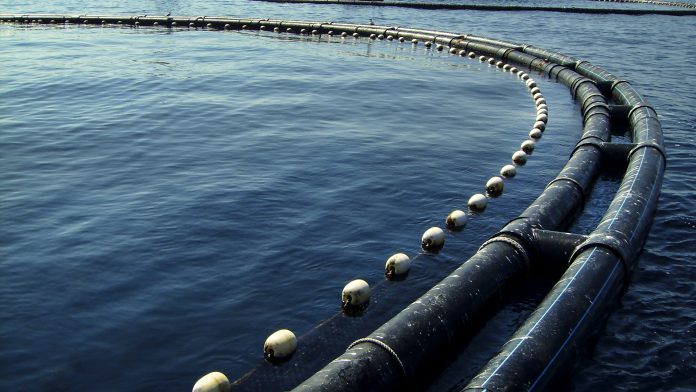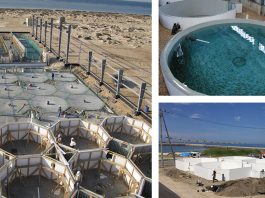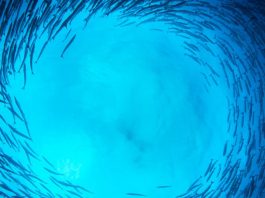Courtney Knupp of the U.S. Soybean Export Council speaks to Innovation News Network about how U.S. Soy can breathe new life into the aquaculture industry, improve sustainability, and enable growth.
Aquaculture is an industry that is going from strength to strength, with aquaculture for human consumption expected to exceed 100 million tonnes globally within the next five years. As one of the fastest growing sectors in food production and trade, it is seeing exponential growth. However, this growth has presented the industry with a unique problem: primarily, how to safely and sustainably feed a large volume of fish and marine creatures whilst remaining cost effective and ensuring the food produced is free of contaminates.
Courtney Knupp of the U.S. Soybean Export Council spoke to Innovation News Network about how the organisation is working to meet the challenge of sustainable aquaculture through the use of U.S. soybeans as the base for an alternative high protein fish feed.
To begin, can you give me an overview of the USSEC and how it is supporting the aquaculture industry?
Representing the interests of U.S. soybean producers, commodity shippers, merchandisers, and allied agribusinesses and agricultural organisations, the U.S. Soybean Export Council (USSEC) works to build demand and create a preference for U.S. Soy.
USSEC is committed to continued investment in research on fish nutrition, the development of aquaculture technologies, and providing technical support to create soy-based feeds used in aquaculture industries throughout the world. USSEC works collaboratively with producers, feed manufacturers, equipment manufacturers, and other ancillary industry sectors to address all aspects of the production cycle for aquaculture. And, for more than 30 years, USSEC’s International Soy in Aquaculture Program has focused on developing, testing, and demonstrating the values of U.S. Soy products in aquafeeds for major farmed species globally.
U.S. soybean farmers are investing in and helping to revolutionise aquaculture around the world by growing a high-quality, sustainable, consistent, and reliable crop. As global population and wealth increase, seafood and fish are in greater demand. Farmed fish comprises almost half of the global fish protein intake around the world and that percentage is growing compared to wild caught species. There are no viable alternatives to soy that can provide the volume of protein in the diet needed to keep up with increasing demand. Looking forward, USSEC is excited about the role that U.S. Soy will play in the growing global aquaculture industry and will continue to be a leading supplier for soy-based aquafeeds and supporter for all facets of the global value chain. Detailed information about USSEC can be found at www.ussec.org.
Soy was introduced as an alternative to fishmeal in aquaculture. What are the advantages of using soy to feed farmed fish?
The use of soy in diets provides a sustainable feed solution for aquaculture and is the most used protein source in aquaculture feeds worldwide. Soy has a high protein density, is highly digestible for most cultured fish and shrimp species, can replace high-cost animal proteins, and yields rapid fish growth. Soy is an environmentally sound solution to the growing global demand for nutritious seafood and is critical for aquaculture because it is an internationally traded product that is available year-round. A large majority of aquaculture diets now contain 25-30% soy as a key part of the formulation, and there are a variety of applications in which soy products can be used in aquaculture diets, including, soybean meal, soybean oil, soy protein concentrate, full fat soybean meal, fermented soy, soy lecithin, soy hulls, and soy isolates, among others.
The quality of fishmeal can vary in availability, price, nutritional composition, and pathogens. Therefore, providing soybean meal as a protein source to replace fishmeal in aquafeeds is an innovative solution to overcoming health challenges in aquaculture. U.S. Soy provides a balanced fish diet that meets all the nutritional requirements of a specific species in different growing stages, which is the most important factor that contributes to the growing of a healthy fish. The use of soy-based aquafeeds also supports pond water quality by reducing nitrogenous wastes in water that impact fish health. Soybean meal costs significantly less than fish meal. Reducing feed cost is critical to improve efficiency and maintain sustainability in aquaculture business.
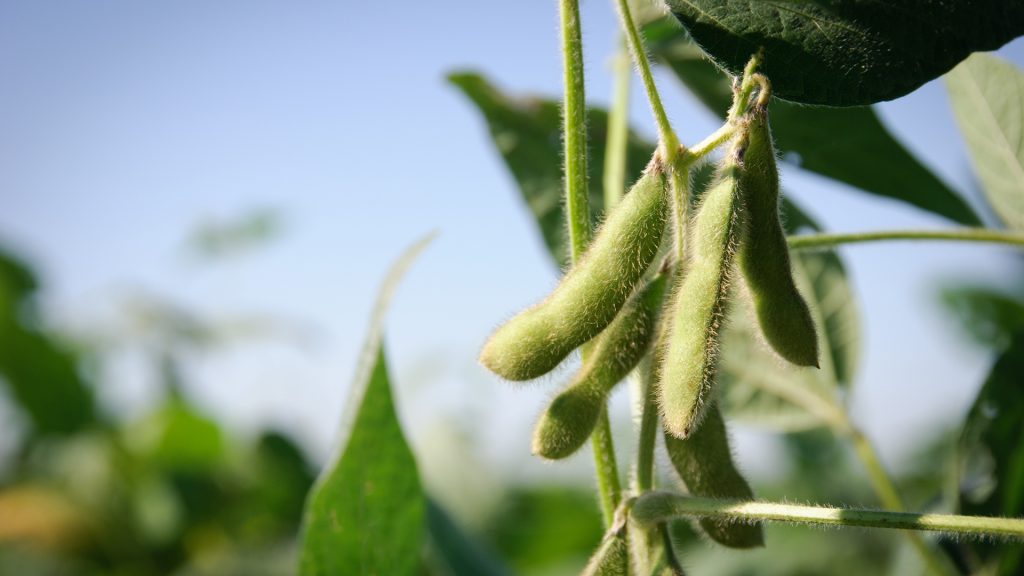
Caption: A hardy high-yield crop, soy offers a more natural alternative to traditional fish feed
What developments in soy-based aquafeeds have been made in recent years to better support fish health?
USSEC has a long-term aim of the promoting of an increase in aquaculture production using high quality feeds. The In Pond Raceway System (IPRS) is an initiative that does both at once. IPRS allows farmers to use the same water volume in ponds to produce a significantly higher yield, and the technology favours complete, high quality feeds that are well-suited to feeds that use U.S. Soy products. With zero water exchange, the use of IPRS technology in fish farming positively supports the environment by minimising wastes in effluent to the water bodies, greatly enhanges water productivity, and helps to face water shortage issues that are becoming a very serious threat to the sustainability of freshwater aquaculture. Moreover, in IPRS all solid wastes are removed from the water and can be used as organic fertilisers for agriculture lands.
What are some of the environmental issues associated with soy production around the world?
Soy is a key ingredient to so many aspects of our lives: feed, food, fuel, and industrial applications. Because of growing consumer expectations and interest in sustainable products, we see companies increasing their demand for sustainable soy. Unlike some countries, the U.S. has a strong reputation for sustainable production practices, infrastructure that moves soy through the country with great efficiency and lower environmental impact, and protection of our natural resources. Soy-based feed formulations reduce the pressure on wild-caught fish for fishmeal, which makes these feeds more environmentally friendly. Formulated soy-based feeds are rich in proteins that produce less waste. U.S. Soy has a solid reputation for its consistent quality, intrinsic nutritional value (particularly the good digestibility of the essential amino acids), and reliable delivery because of infrastructure capability.
U.S. Soy has been approved as one of the certified soybean sourcing programmes, the U.S. Soy Sustainability Assurance Protocol (SSAP), by the Global Seafood Alliance (GSA) and their Best Aquaculture Practices (BAP) standard. U.S. soybeans are largely produced and verified according to SSAP, which helps maintain environmental health and integrity with minimal impact on natural resources such as soil and water. Previously-mentioned sustainable fish production technologies like IRPS allow for harmonious work with the environment and the water sources as a result of extraction of the fish faeces from the system, the reduction in the discharge of nutrients to the water sources is achieved which then contributes to the return of the water to the pond, thereby representing the least use of new water when compared to the traditional system.
What makes U.S grown soy a good option for aquafeeds? How is sustainable production regulated?
The U.S. is the number one country in the world for the preservation of public forestry lands according to the United Nations Food and Agriculture Organization. Since 1907, the amount of forest land in the United States has remained relatively stable. In fact, forest land increased by 2.1 million hectares between 1982 and 2017, while cropland declined during the same period. Soybean production in the U.S. is limited by federal law that soybeans cannot be produced on highly biodiverse grasslands, wetlands, land that was primary forest or continuously forested land, and peatland. These protections can assure buyers that the soy they purchase from the U.S. is a sustainable solution to their soy sourcing needs. The U.S. Soy Sustainability Assurance Protocol (SSAP) describes the regulations, processes and management practices that ensure sustainable soybean production. The SSAP is one part of the overall U.S. soybean producer sustainability programme which includes a national measurement system of the positive environmental outcomes by producers.
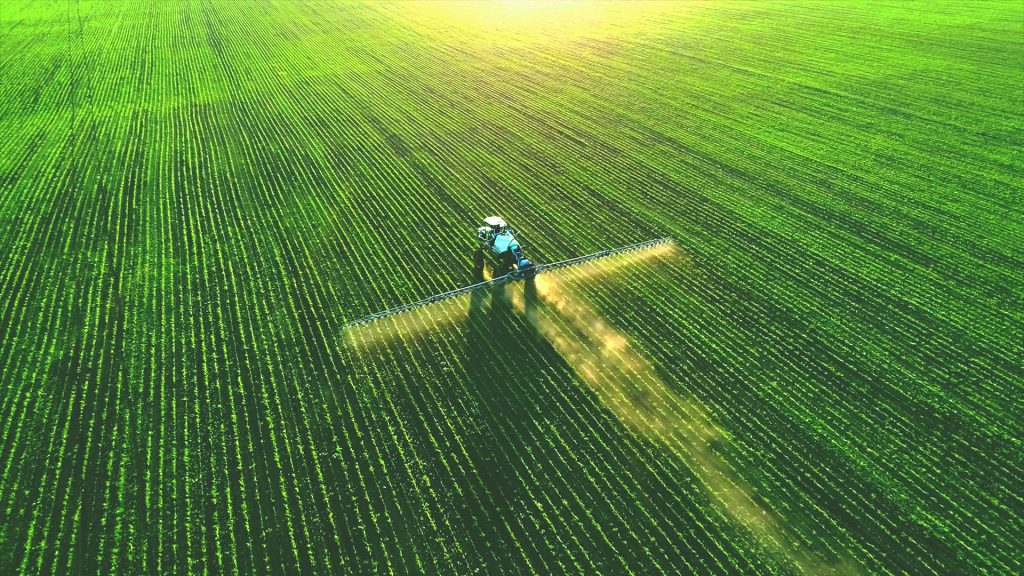
Caption: Through responsible farming U.S. Soy can provide a sustainable solution to the challenges facing global aquaculture
Looking ahead, what do you think the main challenges will be in upscaling soy production to support a sustainable aquaculture industry and meet global seafood demands?
U.S. soybean farmers are committed to meeting the demand of a growing population. U.S. soybean farmers use several sustainable practices to continuously improve their farms for the future. To ensure adequate crop rotation, 94% of the hectares of soybean production are rotated. This means that there is at least one other and perhaps multiple crops being rotated with soybeans. This helps reduce pest pressures and improve soil health. Furthermore, to reduce tillage 70% of hectares of soybeans are in a reduced or conservation tillage system. This means there is little or no disturbance to the soil when producing the crop, and this also means that carbon is sequestered in the soil. This again improves soil health, reduces run off, decreases erosion, and reduces the number of times a tractor is driven across the land, therefore reducing GHG and energy use.
In focussing on pest management, 95% of soy farmers in the U.S. employ integrated pest management, which includes scouting fields, identifying pests and treating those pests, if necessary. This helps maintain the quality of the crop and reduce weed seeds and pest damage. Farmers only treat their fields if it is necessary, using the right product, at the right rate, this maintains the safety of their farms and their families.
Water management is also key 94% of the farmland in the U.S. is not irrigated, it is naturally fed. Much of what is irrigated is involved in vegetable or seed production, so occasionally when soybeans are produced on that land, because of rotation, they may be irrigated. To ensure the appropriate management of nutrient, 92% of farmers in the U.S. conduct soil tests to determine the nutrient profile and needs of their soil. This allows for more precise application and use of nutrients to increase soil health.
Conservation is key to the sustainability of U.S. farming. Because of this, 10% of U.S. farmland is left out of production to protect sensitive areas. This is land that was once in production and now is not. It is typically planted into a conservation cover of native grasses, sometimes trees, or other beneficial covers.
U.S. soybean farmers’ focus on continuous improvement is a key part of the sustainability journey. U.S. soybean farmers have agreed on a national strategy for further enhancing U.S. soybean sustainability through the improvement of key performance indicators (KPIs) in environmental, economic, and social sectors. By 2025, U.S. soybean farmers aim to:
- Reduce land use impact by 10%;
- Reduce soil erosion by an additional 25%;
- Increase energy use efficiency by 10%; and
- Reduce total greenhouse gas emissions by 10%.
All these efforts, combined with our preservation of forestry lands, makes U.S. Soy the sustainable choice for soy sourcing.
Courtney Knupp
Director of Global Nutrition Meal
U.S. Soybean Export Council
cknupp@ussec.org
Please note, this article will also appear in the seventh edition of our quarterly publication.

